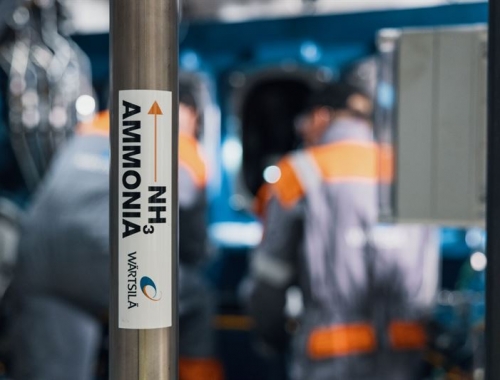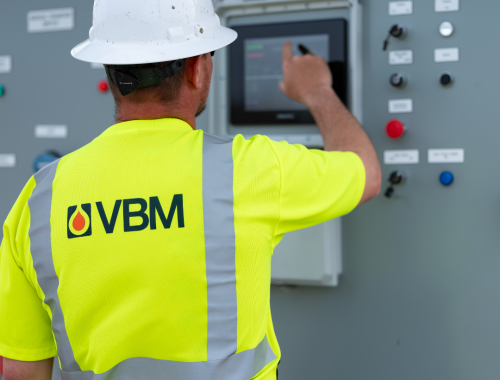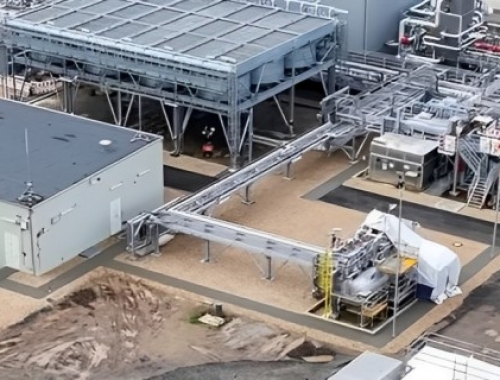Clearing the air on new fuel risks
SUMMARY
The risks of using new zero-emission fuels such as hydrogen, ammonia and methanol to bunker ships is often what makes the headlines when projects are planned. The process is not as fraught as it is made out to be and stakeholders have been working hard to put protocols and regulations in place to ensure safety.
By Vincent WeeThe new low-carbon maritime fuels, chiefly hydrogen, ammonia and methanol, are being treated as a novelty simply because their use for bunkering vessels is indeed novel. However, they all have a long history of being transported as cargo and as such have existing protocols and regulations governing their safe use – a fact that is often forgotten in the debate over their adoption as a bunkering fuel.
In the drive to make shipping’s transition to a cleaner, greener industry, the risk that comes with the added complexity often comes to the fore instead. In fact, this transition need not be as complicated as it is made out to be.
"There is nothing inherently new in the challenge of assessing and mitigating the risk that we face with new fuels. Class societies have established protocols that can be deployed to address the safety issues," Bureau Veritas Marine & Offshore strategy director Paul Delouche tells Gas Pathways.
There are, however, important safety considerations to be addressed, Delouche notes. He adds that ammonia, hydrogen and methanol, the main decarbonisation pathways the shipping industry is looking at, each have different considerations in terms of risk, with the former two especially presenting greater safety challenges.
"Innovation in shipping, as in any industry, requires newly developed solutions to take into account these characteristics at design level," Delouche says.
This means that new safety standards will be needed to adapt to the identified risks. In addition, increased operational risks from crew unfamiliarity with the specific and diverse characteristics of each new fuel and its implications for the safe handling, storage and use as marine fuels will also need to be mitigated, through knowledge, training and skills development.
Delouche suggests the best way to assess risk is to understand the key characteristics of the fuels that impact on safety. These are flashpoint, flammability limits and auto-ignition temperature as well as toxicity to humans.
The risks can be broadly divided into those arising from the use of the fuels on board vessels and from their storage on shore and during bunkering operations.
These risks are derived from the toxic characteristics of some of the gases and the effects of their inadvertent release on the environment and human civilisation, and the destructive nature of others and the potential for serious damage arising from fire or explosion.
Each of the fuels have specific as well as broader risks shared by all. Bureau Veritas has highlighted risks specific to each fuel. These are in turn:
Ammonia
The major risk for ammonia is its toxicity at even low concentrations and its corrosive nature. This makes it essential to protect crew and passengers from exposure during operations. In addition, ammonia is also toxic to aquatic life, making the prevention of spills another challenge to deal with.
A recent Port of Amsterdam study in collaboration with DNV found that the safe minimum spatial distance for pressurised ammonia was well over double that of any other fuel, including refrigerated ammonia.
On balance, ammonia's high flashpoint of 132oC makes it much safer from a flammability perspective.
Hydrogen
Hydrogen, while not toxic like ammonia, is however explosive and highly flammable and must be stored at very low temperatures or under very high pressure. This also presents handling and safety challenges.
Methanol
Methanol is a widely traded chemical so current cargo-handling facilities and safe handling guidelines can be adapted to its use as a fuel. It nevertheless is toxic and also burns with a nearly invisible flame, requiring special fire detection equipment, although its low flashpoint of 12oC makes it relatively safer.
But the challenges are not insurmountable. "We have tried and tested methodologies for understanding these risks, including the use of Hazard Identification and Hazard and Operability analysis studies that bring together a wide range of experts to assess the risks involved with the design, installation and operation of the onboard systems associated with new fuels," says Delouche.
No time to lose
The speed with which change is required in order for the industry to decarbonise however increases the stakes.
DNV has previously warned of an emerging “safety gap” as the dual forces of decarbonisation and digitalisation present new hazards from alternative fuel technologies, such as fire and explosion risk, and issues like data security and increasingly complex digital systems.
“The major challenge is to close the safety gap emerging from cyber threats, new technologies and new fuels. Mitigation of these risks will be vital going forward to realise the enormous potential benefits of digital and low-carbon fuel technologies for safety, efficiency and sustainability towards a goal of continuous improvement,” says DNV Maritime chief executive officer Knut Ørbeck-Nilssen.
Delouche speaks of the need to balance the short- and long-term objectives of obtaining immediate CO2 emissions reductions to reach shipping’s 2030 carbon reduction goals, while moving towards more substantial emissions savings in the medium- to long-term.
"Whilst the speed of change is not a risk in itself, it is an important dynamic in the challenge we all face; including safety considerations. It will also demand a rapid acceleration in innovation to replace the traditional fuels that we have come to rely on," Delouche adds.
In addition, there is also the subsidiary risk of making the commitment to adopt a particular fuel. Wide differences in maturity levels mean costs, availability and even fitness for purpose as a true zero-carbon fuel could vary significantly, compounding investment risks for owners and operators.
For example, the tight timeline for putting ammonia supply infrastructure in place to be ready for the first operational vessels by 2025 and the adequacy of methanol production to supply expected demand are risks for any potential investments in new fuels.
A Zero-Emission Shipping Mission analysis noted safety concerns and considerations such as mitigating concerns on the flammability, low activation and ignition energy of hydrogen, safety considerations associated with the bunkering and handling of ammonia and overall risk assessment and safety management among others, are key to the use of new fuels.
Additionally, the analysis highlighted the need for updated onboard methods, operational manuals, and review of educational programmes across all fuels to prepare the maritime sector for zero-emissions fuels.
In terms of the fuels themselves, clear and well-defined global regulations are needed for safety and operational risk management to mitigate toxicity and spillage risks related to the bulk storage of these fuels, especially for methanol and ammonia.
Working with ports and local communities to address stakeholder confidence will be critical for high-volume storage projects, ZESM added.
In terms of meeting fuel infrastructure needs, the research found that there is a significant gap in safety and operational risk management. The analysis shows that there remains a lack of understanding around safe handling, appropriate standards and safety mechanisms, as well as workforce training and certification for handling new fuels while bunkering or in port waters.
Novel approaches are needed to provide sufficient flexibility for ports to be able to plan for infrastructure investments whilst ensuring compatibility of systems between docking ships and port fueling equipment and power supplies, it added.
According to the Institute of Marine Engineering, Science and Technology (IMarEST), the main obstacle to transitioning lies in the lack of a pre-existing infrastructure designed for these new fuels as most of the current facilities have been designed for liquefied natural gas. Adaptation will be needed, along with the new technologies and relevant safety measures to handle the new green fuels.
Among the three main decarbonisation pathway fuels ammonia, while having many advantages, also seems to pose the most potential problems. The Port of Amsterdam/DNV study brought into sharp focus the importance of spatial safety in the location of bunkering infrastructure for ports planning to handle the new fuels, especially ammonia.
The study found that while spatial distance requirements for the new fuels at both low (400 m3/hr) and high (1,000 m3/hr) flow rates are comparable to LNG bunker operations, ammonia's toxicity area boundary was up to 2.6 km from bunker hose, up to five times that of other fuels.
Despite the risks, ammonia's relatively widespread land-based usage works in its favour however. According to a European Maritime Safety Agency (EMSA) report, while there is little recent maritime experience with using ammonia as a fuel, extensive land-based experience with the production and use of ammonia for the petrochemical and fertiliser industries forms a sound basis for increasing its use as a marine fuel.
Experience with the carriage of ammonia in liquefied-gas carriers – and the specific requirements for storage, distribution, personal protective equipment among others, in the International Code of the Construction and Equipment of Ships Carrying Liquefied Gases in Bulk (IGC Code) – provide some of the statutory requirements to guide its application on ammonia-fuelled ships.
EMSA however added that the toxicity challenges and related risks are significant and, while manageable, they will add complexity to ship designs relative to other new fuels.
As a result it may limit the type of vessels for which it is a suitable fuel to deep-sea cargo ships rather than short-sea, passenger, or inland waterway vessels.
"It is clear that there is a vital role for classification societies... class rules, along with supporting notations, are the building blocks for stakeholders involved in the deployment of new fuels," says Bureau Veritas' Mr Delouche.
He notes that the classification society has started to develop rules for the new fuels while working with the industry on collaborative research projects. Initial rules for methanol and ammonia have been published while rules for hydrogen will come in early 2023.
The overall process is being helped by key maritime industry stakeholders such as insurers like Gard making a commitment to support decarbonisation trials and in the process offering a solution to help ameliorate the risks of decarbonisation.
In November 2022 the Global Centre for Maritime Decarbonisation and Gard signed a five-year agreement to help accelerate decarbonisation of the maritime industry.
Gard will assess and quantify the risks inherent in the centre's pilot projects and trials and provide hull and machinery and protection and indemnity insurance for the projects as well as provide legal and risk advisory services.








